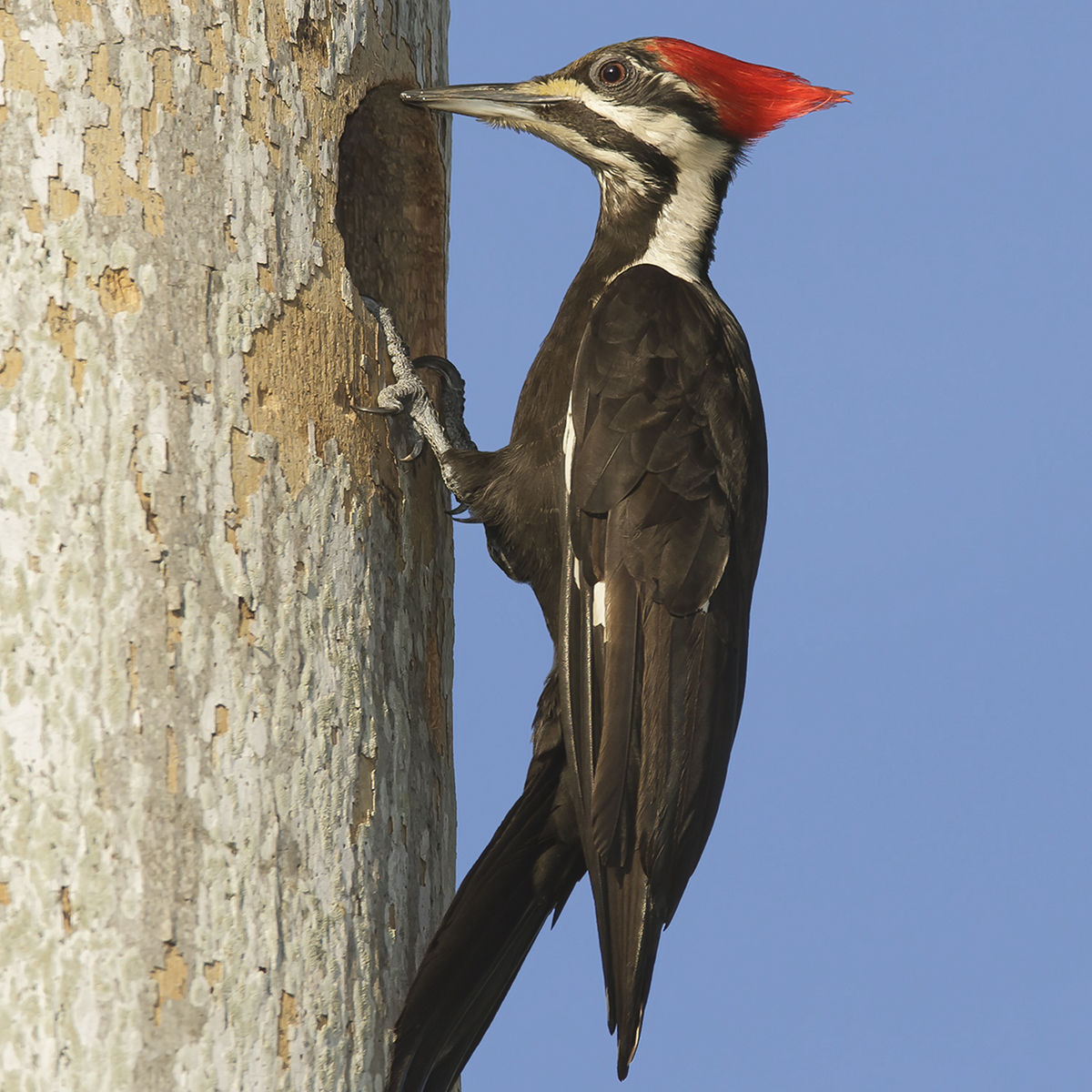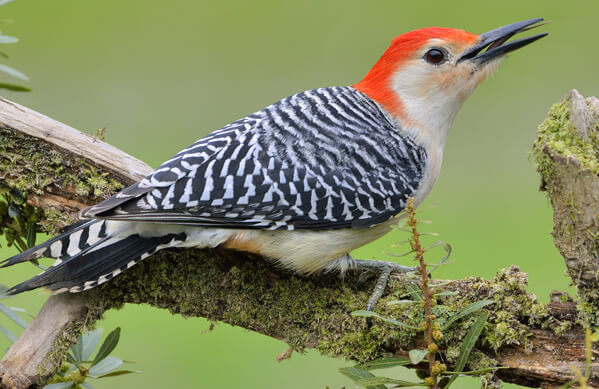Woodpeckers in Florida: Identification Tips and Habitat Preferences
Wiki Article
Woodpeckers: A Comprehensive Guide to Understanding These Unique Birds
Woodpeckers, with their distinctive behaviors and physical attributes, have actually long captivated the inquisitiveness of ornithologists and nature enthusiasts alike. As we discover the detailed makeup, varied varieties, and environmental significance of woodpeckers, a much deeper appreciation for these one-of-a-kind birds and the enigmas they hold unravels.
Woodpeckers' Drumming Actions
Woodpeckers show a balanced and specific drumming actions that serves different crucial features in their everyday lives. This habits is largely related to interaction, region defense, and foraging. The unique drumming noise is developed by the rapid pecking of their beaks versus tough surfaces such as tree trunks, branches, or also steel objects.Interaction is an essential element of woodpecker behavior, and drumming plays a substantial function in this process. Woodpeckers make use of drumming to develop their existence, attract companions, and maintain call with their companions and spawn. The frequency, intensity, and duration of drumming sequences communicate particular messages to various other woodpeckers in the area.
In addition to interaction, woodpeckers utilize drumming actions for region protection. Woodpeckers in Florida. The loud and repetitive drumming acts as an advising to prospective burglars, signifying that the area is already claimed. By establishing their territory via drumming, woodpeckers reduce the probability of disputes over useful sources such as food and nesting sites
Additionally, woodpeckers also employ drumming as a foraging strategy. The rhythmic pecking assists them find insects hiding underneath the bark of trees by creating resonances that interrupt the victim's concealment. This actions showcases the flexibility and resourcefulness of woodpeckers in using their drumming abilities for multiple important purposes.
Unique Adjustments for Tree Climbing
Having grasped the art of drumming to connect, safeguard territory, and forage, woodpeckers have developed unique adaptations that facilitate their remarkable climbing up abilities in their arboreal environments. Woodpeckers have zygodactyl feet, with 2 toes pointing ahead and 2 toes aiming backwards. These tail feathers supply stability and equilibrium, making it possible for woodpeckers to maneuver up tree trunks with precision and dexterity.Moreover, woodpeckers have powerful neck muscles and an one-of-a-kind head framework that aid in their climbing capabilities. Their strong neck muscular tissues permit them to swiftly eat tree bark without experiencing whiplash, while their thick head and tiny brain work as shock absorbers, shielding them from the effect of see this duplicated drumming. These adjustments collectively allow woodpeckers to browse the vertical globe of trees with performance and poise.

Duty of Woodpeckers in Ecological Communities
By foraging for pests under the bark of trees, woodpeckers assist regulate bug populaces, preventing break outs that can harm the general health of the forest. Additionally, woodpeckers develop tooth cavities in trees that offer as critical nesting sites for a range of various other bird types, advertising biodiversity within the environment.In addition, the drumming and vocalizations of woodpeckers play a vital duty in interaction and area establishment. These audios not only serve to draw in companions yet likewise aid define borders in between different woodpecker regions, lowering problems and promoting a harmonious conjunction within the woodland community. On the whole, the existence of woodpeckers in woodland environments highlights their value as keystone types, affecting the characteristics and operating of these environments in multifaceted ways.
visit the site
Composition: Specialized Beaks and Feet
In the complex internet of forest ecological communities, the specialized beaks and feet of woodpeckers are necessary adaptations that allow them to fulfill their crucial eco-friendly duties. Woodpeckers have one-of-a-kind anatomical functions that are specifically designed to help them in their foraging and nesting habits.The most distinguishing characteristic of woodpeckers is their solid, chisel-shaped beaks. These beaks are completely adjusted for boring into wood to reveal pests, larvae, and sap surprise under the bark of trees. The strong muscle mass and durable framework of their beaks enable woodpeckers to eat a rate of approximately 20 times per second without creating damages to their heads.
Additionally, woodpeckers have specialized feet that help in their acrobatic climbing capabilities. Their feet have two toes pointing ahead and two toes aiming backwards, supplying a solid grip on upright surface areas (Woodpeckers in Florida). This one-of-a-kind foot plan, in addition to rigid tail feathers that act as a supportive prop, allows woodpeckers to hold on to tree trunks and branches easily while here they search for food or dig deep into nesting tooth cavities
Woodpecker Variety Variety
Woodpeckers are a diverse team of birds discovered throughout various ecological communities worldwide, with over 200 well-known varieties displaying adaptations to various environments. Woodpeckers have actually evolved to live in a variety of environments, from woodlands and timberlands to meadows and deserts, each presenting distinct challenges that have actually influenced the evolution of distinct woodpecker types.These adjustments make it possible for woodpeckers to forage effectively in their particular habitats, minimizing competition among species and advertising particular niche distinction. In addition, geographic seclusion and historic variables have actually played a function in shaping the circulation and diversity of woodpecker varieties, leading to the large range of specialized adjustments seen in these fascinating birds.

Verdict
Finally, woodpeckers are remarkable birds that exhibit unique drumming actions, specialized adaptations for tree climbing, and play important roles in communities. Their composition, including specialized beaks and feet, permits them to grow in their setting. With a varied variety of woodpecker types located worldwide, these birds are vital for maintaining the health and equilibrium of forests and timberlands. Comprehending and appreciating the intricacies of woodpeckers can give useful insights into the all-natural world.Report this wiki page